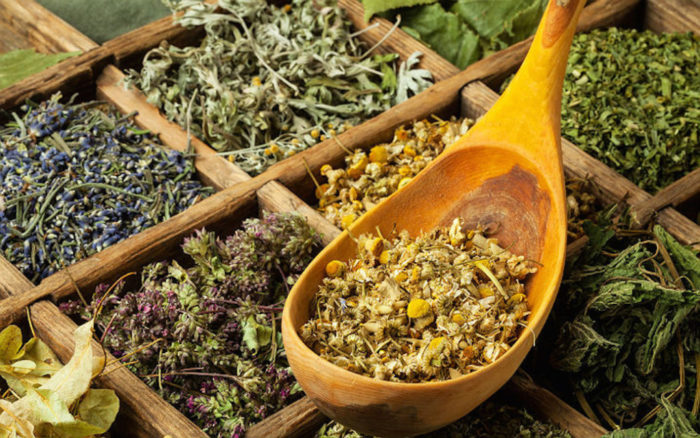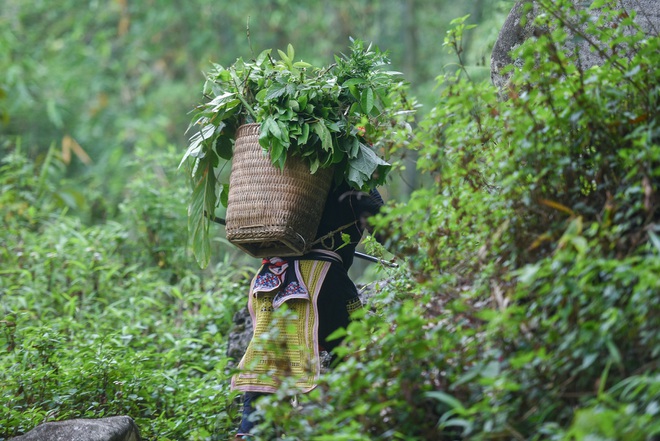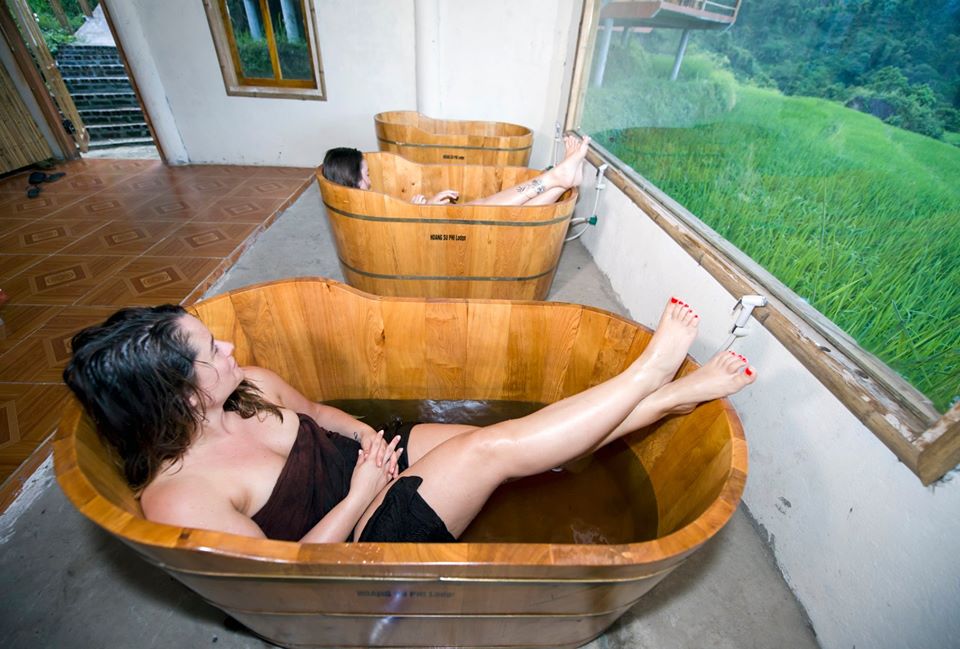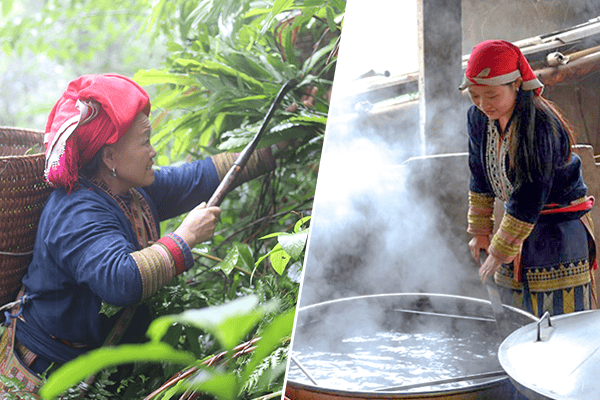Red Dao's herbal bath
The Red Dao's Ancient Tradition of Herbal Bathing
The Red Dao people, one of the ethnic minority groups in Vietnam, have been known for their rich culture and traditional way of life. Among their many rituals and customs, one that stands out is the practice of herbal bathing. Passed down from generation to generation, this ancient tradition has been a key element in the Red Dao's holistic approach to health and wellness.
In recent years, the Red Dao's herbal bath has gained attention from tourists and health enthusiasts alike, seeking to experience the healing properties of this unique bathing ritual. In this blog post, we will take a closer look at the Red Dao's famous herbal bath – its ingredients, benefits, cultural significance, and how it has evolved in modern times.
The Healing Power of Herbs: Key Ingredients in the Red Dao Herbal Bath
The Red Dao people believe that nature holds the key to good health and well-being. This belief is reflected in their use of various herbs and plants in their daily lives, including their herbal bathing ritual. These herbs are carefully selected and combined to create a powerful concoction that not only cleanses the body but also promotes healing and relaxation.
Mugwort (Artemisia Vulgaris)
Mugwort, known locally as "thiếp", is a common herb used in the Red Dao herbal bath. It has been used for centuries in traditional medicine for its anti-inflammatory and antiseptic properties. It is also believed to improve blood circulation and relieve muscle pain and fatigue.
In the herbal bath, mugwort leaves are boiled in water to release its natural oils and aroma. When combined with hot water, it creates a deeply relaxing and soothing experience for the bather.
Ginger (Zingiber Officinale)
Ginger, or "gừng" in Vietnamese, is another popular ingredient in the Red Dao's herbal bath. It is known for its warming and detoxifying properties, making it a perfect addition to the already rejuvenating bath.
Ginger has been used in traditional medicine to alleviate colds, coughs, and other respiratory illnesses. When used in the herbal bath, it helps to open up the pores, allowing the body to expel toxins and impurities more effectively.
Lemongrass (Cymbopogon)
Lemongrass, or "xả" in Vietnamese, is a staple herb in many Southeast Asian cuisines. However, its uses go beyond just cooking – it is also a key ingredient in the Red Dao's herbal bath. It is known for its antibacterial and anti-inflammatory properties, making it an effective remedy for skin infections and irritations.
In the Red Dao's herbal bath, lemongrass is used to soothe and cleanse the skin, leaving it feeling refreshed and rejuvenated. Its pleasant citrusy scent also adds to the overall relaxing experience of the bath.

A Journey to Wellness: The Red Dao Herbal Bath Experience
The Red Dao's herbal bath is more than just a physical cleansing ritual – it is a journey towards holistic wellness. From the preparation of the bath to the actual bathing process, every step is done with intention and purpose.
Preparing the Bath
The art of preparing a Red Dao's herbal bath is a time-honoured tradition that requires skill and knowledge. Depending on the desired effect, the herbs are carefully selected and combined in specific ratios to create a powerful herbal concoction.
After boiling the herbs in water, the mixture is left to cool for a while before being transferred to a wooden tub or barrel, traditionally made from bamboo. This allows the herbs to infuse into the water, creating a strong and aromatic brew.

Bathing Process
Once the bath is ready, the bather will enter the tub and soak for about 30 minutes. During this time, the herbs and hot water work together to cleanse the pores, relax the muscles, and promote blood circulation.
For added therapeutic benefits, Red Dao women will often massage the bather's body with the herbal water, focusing on pressure points and areas of tension. This technique is believed to help release toxins and improve overall well-being.
Post-Bath Rituals
After the bath, the bather will rest for a while before changing into clean clothes. In the Red Dao culture, it is believed that the body should not be exposed to cold air immediately after a hot bath to avoid illness.
To complete the experience, the bather may also drink some of the herbal bath water, which is said to have detoxifying and rejuvenating effects on the body.

Beyond Relaxation: The Cultural Significance of the Red Dao Herbal Bath
In addition to its physical benefits, the Red Dao's herbal bath holds great cultural significance for the ethnic group. It is not just a bathing ritual, but a way of life that reflects their strong connection with nature and their beliefs in holistic health.
The practice of herbal bathing is deeply ingrained in the Red Dao culture and plays an important role in their daily lives. It is seen as a form of self-care and a way to maintain balance and harmony within the body and mind.
Furthermore, the herbal bath is also used in important ceremonies and celebrations such as weddings and New Year festivities. It is believed to bring good luck, prosperity, and blessings to those who partake in it.
The Art of Preparation: Crafting the Perfect Red Dao Herbal Bath
As mentioned earlier, preparing a Red Dao's herbal bath requires skill and knowledge. The process may seem simple – boiling herbs in water – but there is so much more to it than that.
Traditional Methods
Traditionally, the Red Dao people use a wood-fire stove to boil the herbs, believing that the heat from the wood fire adds to the therapeutic benefits of the bath. They also use specific types of wood such as bamboo, which is believed to enhance the aroma and properties of the herbs.
The temperature and time of boiling are also important factors in creating the perfect herbal bath. The water should be hot enough to release the natural oils and scents of the herbs but not too hot that it causes discomfort for the bather.
Modern Innovations
In recent years, with the rise in popularity of the Red Dao's herbal bath among tourists, there have been some modern innovations made to the traditional method of preparation. Electric stoves or gas stoves are now commonly used instead of wood-fired stoves, making the process more efficient and convenient.
Some establishments have also started using filtered water in their baths, ensuring that the water is free from impurities and safe for visitors to drink.

Rediscovering Nature's Remedies: The Red Dao Herbal Bath and Modern Health
As modern medicine continues to advance, the Red Dao's ancient tradition of herbal bathing has also caught the attention of researchers and health professionals looking for alternative remedies and treatments.
Several studies have been conducted on the healing properties of the herbs used in the Red Dao's herbal bath. These studies have shown promising results, with mugwort, ginger, and lemongrass being found to have anti-inflammatory, antibacterial, and antioxidant properties.
Additionally, the holistic approach to health and wellness in the Red Dao culture has also gained recognition, with many people incorporating elements of their practices into their own lifestyles.
7 Benefitcial fact of Red Dao Herbal Bath
-
Treat rheumatism and joint pant
-
Treat sweaty hand and feet
-
Boots male virility
-
Detoxifies the body
-
Calm the mind and body dispelling fatigue
-
Beneficial for women after child birth
-
Improves blood circulation
Conclusion
The Red Dao's herbal bath is more than just a cleansing ritual – it is a cultural tradition deeply rooted in nature and holistic well-being. From the careful selection and preparation of herbs to the actual bathing process, every step holds significance and purpose.
As we continue to rediscover the healing power of nature, the Red Dao's famous herbal bath serves as a reminder of the ancient wisdom passed down by our ancestors. Whether it's for relaxation or for seeking a natural remedy, the Red Dao herbal bath offers an experience that goes beyond just physical benefits. It is a journey towards overall wellness and a deeper connection with nature.
.png)



.jpg)
.png)
.jpg)
.jpg)
.png)
.png)
.jpg)
.jpg)
.jpg)
.jpg)
.jpg)
.jpg)
.jpg)
.jpg)
.jpg)
.jpg)
.jpg)
.jpg)
.jpg)
.jpg)
.jpg)
.png)
.png)
.jpg)
.jpg)
.png)
.jpg)
.jpg)
.jpg)
.jpg)
.jpg)
.jpg)
.jpeg)
.jpg)
.jpg)
.jpg)
.jpg)
.jpg)
.jpeg)
.jpg)
.jpg)
.png)